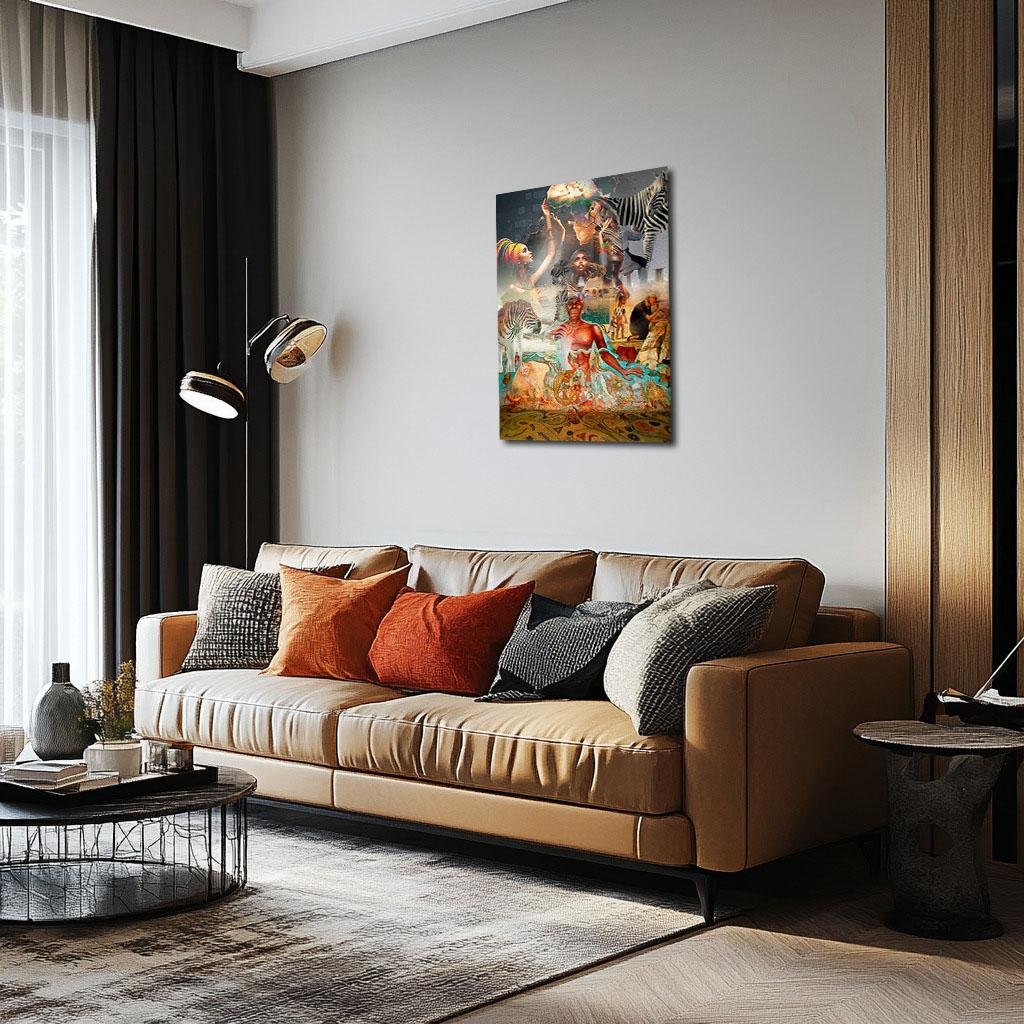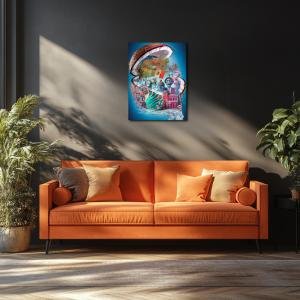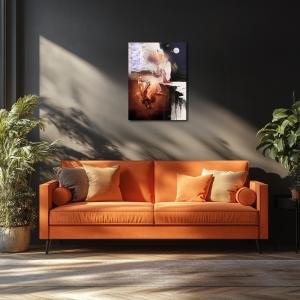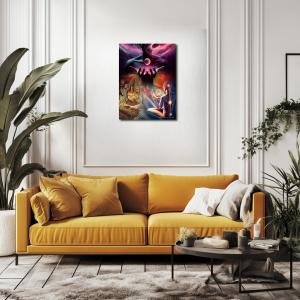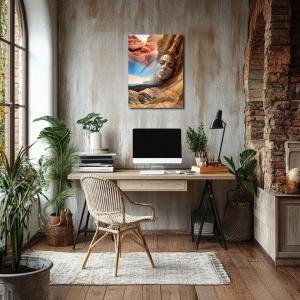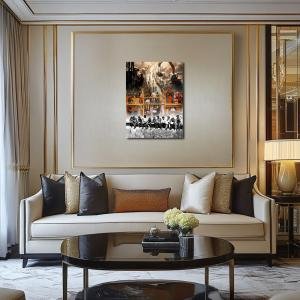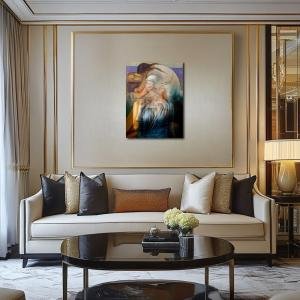Ancestral Currents: The Figure of Africa in Motion
Ancestral Currents reimagines Diego Rivera’s Figure Symbolizing the African as a sweeping symbolic meditation on identity, rebirth, and the elemental strength of heritage. A seated male figure anchors the earth, while divine feminine forms rise above, lifting a glowing African continent cracked by history and ignited by spirit. Zebras walk through myth and mist, mosaics whisper legacy, and the entire canvas pulses in hues of copper, turquoise, and galactic black. This surrealist reconstruction transforms the continent into a sacred orbit of memory, resistance, and enduring grace.
Please see Below for Details…
Hotline Order:
Mon - Fri: 07AM - 06PM
404-872-4663
This conceptual reimagining of Diego Rivera’s Figure Symbolizing the African emerges as a layered visual epic titled Ancestral Currents . In this reinterpretation, Rivera’s foundational intent—to elevate the African legacy as a central pillar of human civilization—is revoiced through the lens of digital symbolism and surrealist montage. The work becomes less a single figure and more a living narrative, evoking land, memory, ritual, diaspora, and reawakening.
The central figure from Rivera’s original mural remains present, his seated form embedded into the base of the composition, surrounded by painted mosaics and rippling stone textures. His torso, dark and terracotta-toned, acts as the earth’s core—rooted, sculpted by centuries of endurance. Around him, mythic creatures from African iconography swim and swirl as though the soil itself is storytelling. His expression is not one of weariness but of elemental knowing, a keeper of truths the modern world has not yet relearned.
Above him rises a constellation of Black African women, each dressed in vibrant traditional attire and modern regal stylizations. They reach skyward—not to grasp power, but to shape it. One lifts the African continent, cracked and golden, as if in mid-forging. Their bodies float between dust and sky, their jewelry glinting like coded history. The gesture is divine—part protector, part creator. Rivera’s original male symbolism is here expanded and feminized, echoing the matrilineal strength that pulses through much of African and diasporic heritage.
The zebra, a recurring figure across this reinterpretation, steps across multiple layers of time. One walks into mist. One is sliced into fragments. Another becomes near-abstract, reduced to a living pattern. The zebra represents identity—not in its singular form, but in its contradiction: wild yet composed, known yet untamed. In Rivera’s original symbolism, animals such as these stood for the organic pulse of Africa’s untapped vitality. Here, they suggest both continuity and rupture, beings who carry both grace and the history of their exploitation.
Color serves not as backdrop but as breath. The base is cast in burnt sienna and copper—colors evoking sacred soil, ritual clay, the warmth of sun on skin. These tones are not nostalgic; they are alive. They throb at the edges of the composition, reminding the viewer of heat, of hunger, of harvests. From this earthy origin rises a gradient of turquoise, sage, and deep indigo—cooler tones suggesting spirit, air, and intellect. These cooler layers hover over the zebras and ancient ruins, where colonial histories blur into the present.
But the sky—the highest register of this work—is where the temperature rises again. The upper portion is cloaked in deep charcoal, a galactic purple that fades to obsidian. This darkness is not void; it is womb-like, echoing both space and ancestral night. It cradles the golden-red hues of the lifted continent, which glows like a solar flare, its surface cracked like fired ceramic. This African map burns not from destruction but from rebirth. It is the kiln of culture, heated by both memory and revolution.
Other small yet potent elements populate the canvas: ancient ruins, a child holding a reed instrument, fragments of North African mosaic art, and even the blurred silhouettes of market women and dancers. These are the witnesses, the carriers of rhythm, trade, ceremony. Their presence is semi-transparent, as though they are drifting in and out of visibility, demanding to be remembered.
When I created Ancestral Currents , I was thinking of Africa not as a monolith but as a pulse—a rhythm that predates and outlives colonial lines. Rivera honored Africa by embedding it within his panoramic visions of human unity and struggle. I wanted to take that further—not just to place the African figure within the conversation, but to let the continent become the axis around which the story turns. The act of lifting the map is an act of reclaiming. The seated figure below, eyes forward, remains unshaken—because he knows it has always belonged.
The composition flows like a river delta: wide at the base, narrowing toward gesture and light. The movement is upward, yet the emotional weight rests in the earth. There is no singular focal point because every figure, every animal, every tree root and temple brick, speaks. This is not a composition of parts—it is a convergence of voices.
Add your review
Your email address will not be published. Required fields are marked *
Please login to write review!
Looks like there are no reviews yet.

